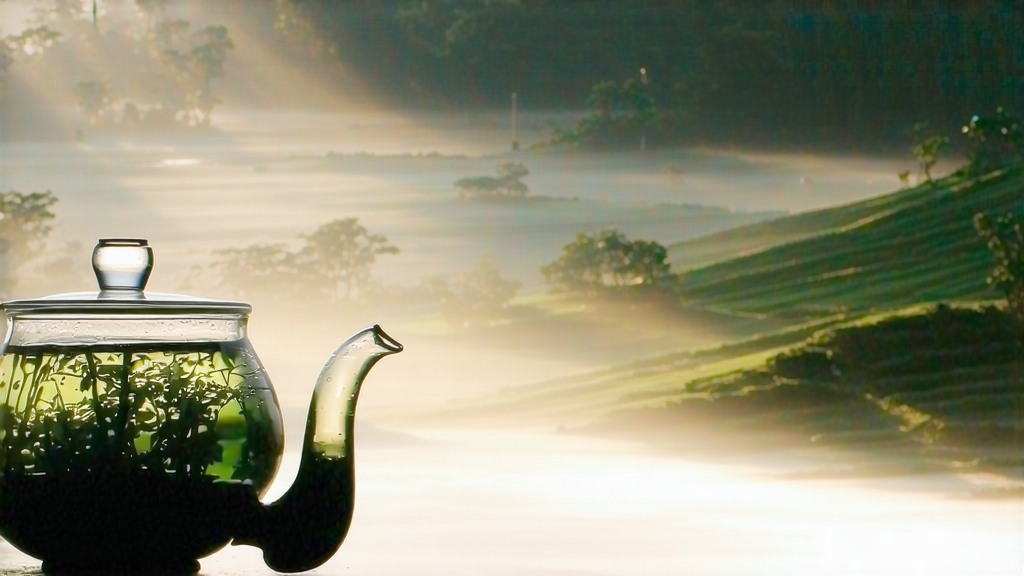
When Chinese tea lovers speak of “white tea,” they are not referring to a colorless brew but to a whole family of minimally processed leaves that capture springtime in its most innocent form. Among these, Fuding Silver Needle—Bai Hao Yin Zhen—stands like a quiet scholar at the gate of the imperial library: understated, luminous, and impossible to ignore once you have met its gaze. Grown along the rocky, red-soiled coast of northern Fujian, this tea is plucked only between the Qingming festival and Grain Rain, when the first downy buds have grown plump yet remain unopened. Each bud is a tiny silvery arrow, sheathed in fine hairs that refract light like moonlit frost. To understand Silver Needle is to follow that arrow backward through dynastic edicts, maritime trade routes, and the slow patience of leaf and air.
Historical whispers place the birth of white tea in the Song dynasty (960-1279), when imperial tribute lists first recorded “white tablets” pressed from wild buds near Tai Mu mountain. Yet the recognizable, loose-needle style did not appear until the late Ming, when the court abandoned compressed cakes and artisans in Fuding began sun-drying buds on bamboo trays. Early export ledgers from the port of Guangzhou show Silver Needle reaching Dutch apothecaries by 1725, marketed as “Silver Down” and prescribed for fevers. The 19th-century Pekoe Wars—British auctions bidding against Russian buyers—pushed prices so high that one catty exchanged for an equal weight of silver, giving the tea its enduring nickname “white gold.” During the Cultural Revolution, production nearly ceased; state farms replaced ancient shrub rows with short-stemmed rice. Only in 1984 did researchers from the Fujian Academy re-graft heirloom Da Bai cultivars, restoring the genetic line that connoisseurs now chase with the same fervor Burgundy collectors reserve for Romanée-Conti.
Strictly speaking, only two cultivars qualify for authentic Silver Needle: Fuding Da Bai and the even rarer Zhenghe Da Hao. Da Bai (“Big White”) develops a plumper bud rich in amino acids, yielding the famous soy-sweet umami, while Da Hao (“Big Hair”) produces longer, hairier shoots that lean toward orchid and dried apricot notes. Within Fuding county, micro-terroirs further split the category. Tea picked below 200 m elevation, where red granite soils meet sea mist, matures faster and carries a saline hint locals call “seaweed waist.” Gardens above 500 m on Tai Mu’s northern face receive cooler nights; buds grow slowly, stacking fructose and creating a shimmering, almost electric finish known as “mountain lightning.” Purists debate whether the truest expression comes from Guan Yang village—whose southeastern slope catches the first dawn light—or from the shadowed western hollow of Pan Xi, where leaves wither more gradually. The argument is happily endless, ensuring every spring a new pilgrimage of buyers, bloggers, and competition judges.
Processing Silver Needle is less a recipe than a weather forecast. Pickers gather at 5 a.m. while dew still clamps the bud’s protective cuticle; any later and solar heat begins enzymatic oxidation that darkens the leaf. Baskets must be shallow—no more than 5 cm deep—to prevent bruising. Back at the shed, buds are spread on reed screens called “qing liang,” then left to wither for 36 to 48 hours depending on humidity. The goal is not to “kill green” as in green tea but to seduce moisture away so gently that oxidative enzymes stay alive yet dormant, locked in a pale twilight. Master crafters read the leaf like sailors read clouds: when the bud’s spine kinks without snapping, and its surface turns from goose-down white to the color of old piano keys, it is time to bake. Charcoal baskets of hard lychee wood are heated to 40 °C, lower than a hot-tub, and the trays are stacked above them for a mere ten minutes—just enough to fix the aromatics. Finally, the tea rests for at least three weeks so residual moisture equalizes; many producers hold it until the first autumn moon, believing lunar tides coax the flavor into rounder focus.
Western drinkers often treat white tea like a fragile invalid, scalding it with 90 °C water and then complaining of thin broth. Silver Needle demands bolder courtship. Start with a clear glass gaiwan or a tall borosilicate pot so you